Top Ten: Fine dining by volume
- Caifu Magazine | by Caifu Global
- EN

By Alan Forsythe
As they say when deciding on a business, try to find something everyone needs; well let’s face it, everyone’s got to eat. Hence the reason so many new businesses are restaurants.
However not all are created equal, the demands of multi-million dollar leases mean many high-end restaurants must provide not only impeccable service and ambiance along with their gustatory delights, they must also do it in very high volumes.
Brian Young, formally executive chef at the legendary Tavern on the Green in NYC (at one time the highest volume restaurant in North America, possibly the world at $40 million in sales annually) and Louie Bottega in Los Angeles (no slouch at $22 million in sales for 2014) explains some of the economics in fine dining by volume.
“There are significant challenges in doing that sort of volume ($20 million +) keeping consistent quality is a huge problem, as well as the wear and tear on the business with, so many customers passing through on a daily basis.”
But ultimately says Young the biggest hurdle for any large-scale dining establishment catering to higher end clientele is lack of business.
Most problems facing restaurants of this size and volume are good problems to have and they are solvable because money takes care of it, not to mention their overall costs come down due to economies of scale. The real problem is a downturn in business, these types of places are planned with high volumes in mind, and if you don’t have the volume it’s hard for them to adjust to that.”
He explains th at for most restaurants in the high-end, high-volume game, it’s usually a very expensive lease that becomes the largest piece of their overhead.
“It’s very high in NYC, second probably only to Hong Kong. Vegas isn’t as high but Vegas is almost its own animal, to get along in Vegas you have to know how to play the game.”
A large part of the sales numbers listed are from alcohol sales; Young says at least 70 percent of total revenues, which explains the rise of the club/restaurant. Which at face value would seem a strange hybrid, but it serves the purpose of maximizing revenues in a very expensive space by extending hours and increasing liquor sales.
“People today probably drink less, so the mentality is definitely leaning towards quality -based product. Quality wine lists, high wine by the glass sales, high quality cocktails.”
Young says that revenue can also come from products that had little to no value 10-20 years ago. “For example after dinner drinks have definitely declined, but water sales are increasing.”
In such a high-volume, potentially high-stress environment it would be natural to think that staff turnover would be high, or that retaining high-quality staff would be difficult. That, however is a problem large fine-dining restaurants don’t have. “Staff loss isn’t really an issue, high-volume places attract motivated wait staff, that’s just reality,” said Young.
What is needed is a very capable and experienced management team. The Union Square Hospitality Group, who operate over a dozen very well-respected restaurants in NYC, with plans to expand into Dubai, are one example of the type of organization it takes to manage high volume fine dining.
There is also the highly successful Hong Kong based Gaia Group with a diverse selection of restaurants, bars and lounges in Hong Kong and Mainland China.
Then of course there’s the Tao Group with almost two-dozen restaurants and nightclubs in NYC, Las Vegas and Sydney Australia headed by Jason Strauss and Noah Tepperburg. Their Tao Asian Bistro in Las Vegas is arguably the most successful restaurant in the world.
Then again how do you define success? “If you’re attracting a thousand people a night to your restaurant that tells you you’re doing something right,” says Young.
The following are the top ten fine dining restaurants in the world based on sales volume. Some figures are based on published industry information others are speculation based on size, menu prices, published service volume and comparisons to the published sales figures of comparable restaurants.
Tao Asian Bistro Las Vegas
Located in the Venetian Hotel, Las Vegas Blvd. $47 million, 60,000 sq ft (5,574 sq meters).
As noted NYC-based Tao Group has several restaurants in NYC, Las Vegas and Sydney Australia, but, Tao Asian Bistro is their flagship location. Even by Las Vegas standards it is opulent, featuring a twenty-foot Buddha in the main dining room, a roof-top 'beach club’ with private cabanas for rent and $5,000 a night bottle service, Tao Asian Bistro Las Vegas could only exist in Las Vegas. Their sprawling location makes use of every sq. ft, they can serve almost two thousand meals a night and then operate as a night club into the wee hours, accumulating substantial revenue through drink sales. And just like the rest of Las Vegas, Tao Asian Bistro goes almost non-stop with the Tao Beach Club operating through the day. The Las Vegas location also has the huge advantage of having millions of visitors every year, to really what is a fairly small city. As a result Tao Asian Bistro can stand out as a destination restaurant with a constant supply of new clientele.
Tao Downtown NYC
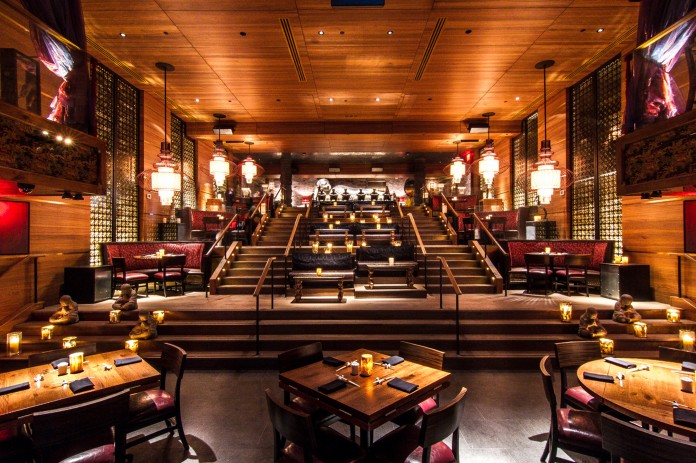

Located in the Maritime Hotel on Ninth Ave. $38 million 30,000 sq ft. (2,788 sq meters).
Yes the Tao Group grabs the top two spots on this list with Tao Downtown, their flagship NYC location; another multi-level, opulent restaurant/nightclub, this one with a twenty-foot version of the Hindu Goddess Shiva taking centre stage. Like Tao’s Las Vegas location Tao Downtown makes use of every sq. inch of its palatial-like space, with a large main dining room, dance floor/lounge area and several bars. As well, being in New York means they must, and do produce highly-regarded food out of an eclectic menu.
Quanjude Bejing
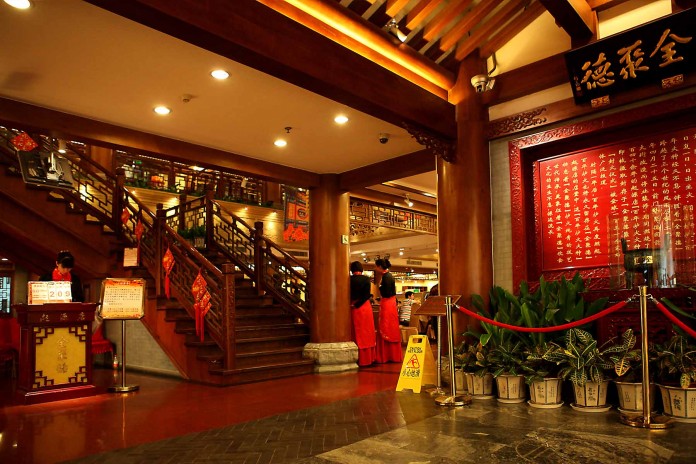
This seven-story restaurant on Hepingmen Ave. established in 1864, serves up to 5,000 meals a in 40 private dining rooms, can seat 2,000 patrons and has. 50 affiliates across China and internationally.
We have no firm sales numbers for Quanjude, but based on their size and volume it is almost certain they must be producing revenue on par with Tao Group’s two large restaurants. The group has dozens of restaurants under the Quanjude name across Mainland China and Hong Kong, including eight in Beijing alone. But it is their seven-story restaurant on Hepingmen Ave that regularly hosts heads of state, celebrities and other VIPs who come for their signature item, roast Peking duck. The Hepingmen Ave location is rumored to serve 5,000 meals on almost a daily basis. Certainly not as flashy and innovative as some of the other restaurants on this list, but there is no arguing their traditional menu remains hugely popular to local residents and international visitors alike.
Joe’s Stone Crab
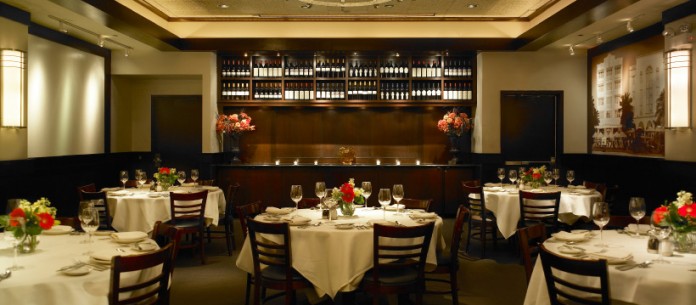
Located on the Washington Ave, in the heart of Miami Beach. $36 million, 9,000 sq. ft. (837 sq. meters).
Over a century old, Joe’s Stone Crab was established by Joe Weiss in 1913 and has become a fixture of Miami Beach attracting thousands of diners a day between the high season tourist months of October through, May. Like Tao Asian Bistro Joe’s Stone Crab cavernous space is filled with an ever-flowing stream of visitors, who make dinner there a must-do part of their trip. And like Quanjude, what they lack in flash and opulence is more than made up by tradition. Tourists come for the cracked crab and Joe sells it by the bucket load, over a thousand meals per day in high season. Like most restaurants on this list Joe’s Stone Crab is now owned by large management group, in this instance Lettuce Entertain, You Enterprises, who have a also established locations in NYC and Chicago.
Lavo NYC
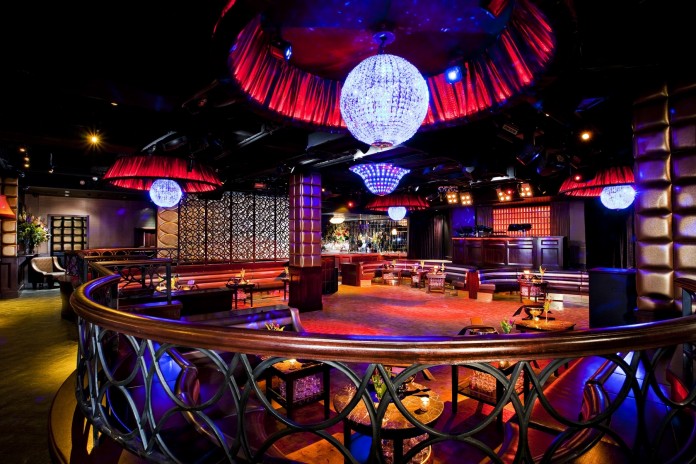
Located on E. 58th Street. $31 million, 6,500 sq ft. (605 sq. meters).
Another offering from the Tao Group, Lavo must be one of the strangest hybrids ever conceived, one part rustic Italian dining room, and one part glitzy nightclub. It is not a combination that springs to mind for most people, however that may be the secret to Tao’s group success, concepts/combinations no one else has tried or even thought of. This upper East Side restaurant/nightclub is another huge location on the scale of most restaurants, although compared to Tao Asian Bistro and Tao Downtown it’s 6,500 sq. ft. is downright intimate.
Old Ebbitt Grill
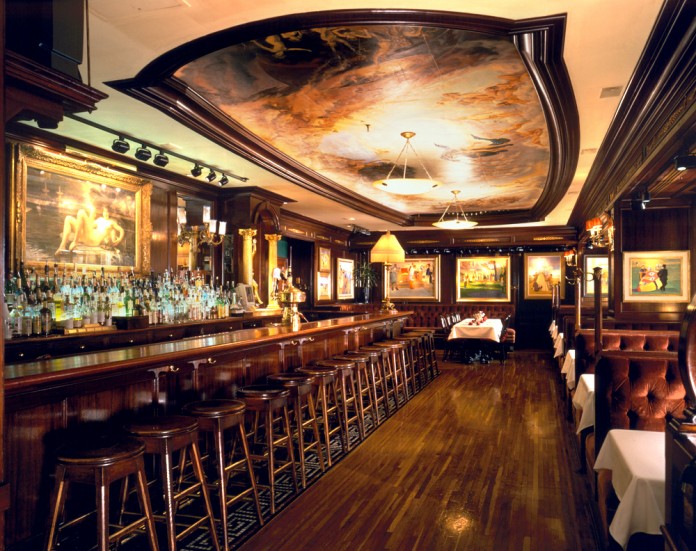
Located on 15th Street NW, Washington D.C. $28 million, 25,000 sq ft. (2,223 sq. meters).
The oldest restaurant on this list, dating from 1856 (although not in its original location). Since 1983 occupying what was an old Vaudeville theater, like every restaurant on this list, to varying degrees, it is a massive space capable of handling thousands of diners a night. Also like many restaurants on this list a substantial portion of their revenue comes from alcohol sales. It’s rustic interior features items retained from the original 1856 location or recreations of 19th century artifacts. Being in Washington D.C (close to the White House) it’s been the scene of several political scandals and intrigues. Even though their signature item is a bacon cheeseburger, their menu (while simple and basic) is well-reviewed and manages to attract almost 2,000 diners a day.
CDL club-restaurant

Located on Povarskaya Street, Moscow. An estimated $26-28 million.
Another historic location, in this instance an 18th century mansion, CDL features a large multi-level main dining room, and several private rooms that are often used for large company functions or diplomatic gatherings. It has also hosted many heads of state, and remains popular with the city’s ruling elite as well as visitors, providing a menu of largely traditional Russian food (hard to go wrong with caviar after all). And once again they maximize the use of their space by attracting late-night partiers who wish to dance, drink vodka and consume caviar into the wee hours of the morning. No firm sales numbers for CDL, but based on their size, volume and average menu price the above estimate should be within an accurate range.
Felix Hong Kong
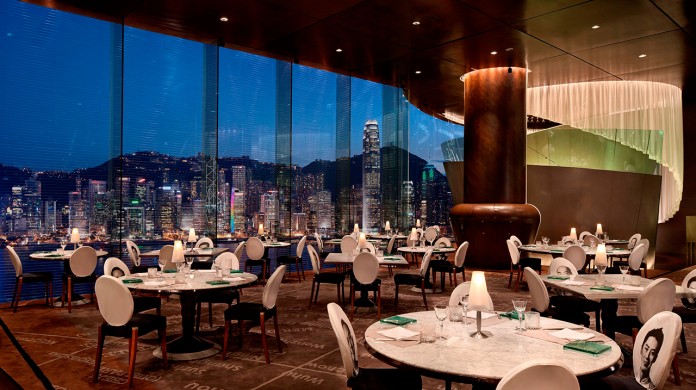
Located on the 28th floor of the Peninsula hotel tower on Salisbury Road. An estimated $23-26 million .
Probably the highest average ticket price of any restaurant on this list, and most certainly the best view. Taking over the top two floors of the Peninsula Hotel’s modern tower, the Felix, designed by Philippe Starck, is another sprawling space that offers diners (and drinkers) several options within one restaurant. Although its menu is highly rated (as well as their cocktail list) the main attraction of the Felix remains its million dollar view (perhaps that should be billion dollar?). Again no published sales figures are available but all factors indicate Felix’s revenue must fall safely within the low to mid twenty million-dollar range.
Gaia Ristorante
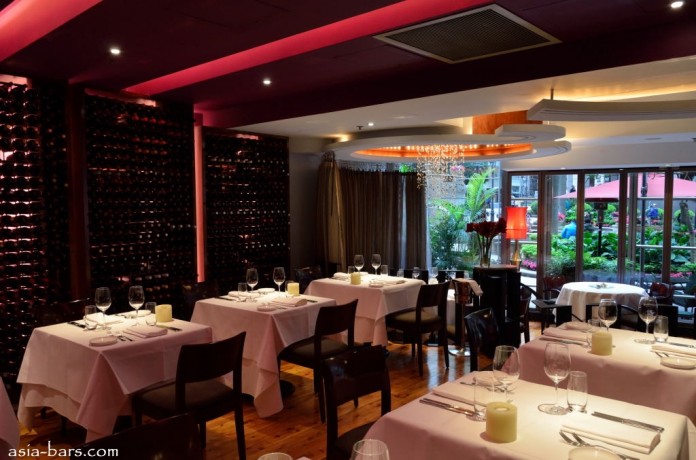
Located on the Queen’s Road, Hong Kong. An estimated $20-25 million.
The first of the Hong Kong-based Gaia Group’s very successful restaurants. Gaia Ristorante features an extensive wine list, and has a dedicated following. A ground floor location, with its own piazza, reminiscent of Rome. Not as large and opulent as other restaurants on this list, but as noted they have a large dedicated following who pack Gaia Restorante from noon till midnight.
Bon Moscow
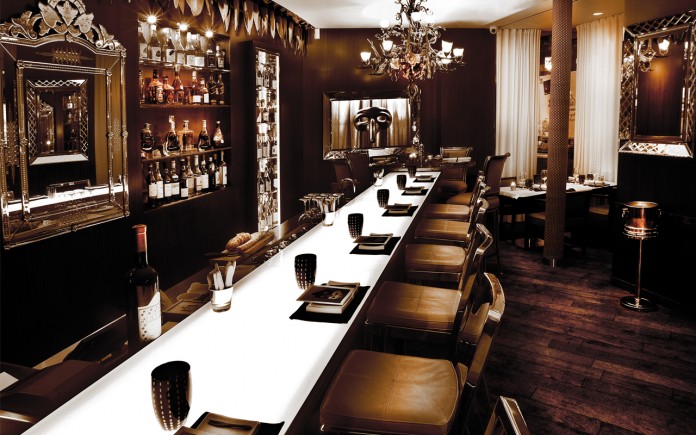
Just a hop skip and a jump from Red Square. Estimated at $18-22 million.
Yet another of the restaurant/club hybrids, and another Philippe Stark design, Bon Moscow is actually the third version under that moniker, although not under the same ownership. Bon Moscow is managed by Arkady Novikov and Alexander Sorkin under the Novikov Group name. It features a largely black interior and Kalashnikov rifle lamps. Generally a well reviewed if slight menu, it still manages to attract the local celebrities, gangsters, wealthy oligarchs and everyone else desperate to be seen in the company of the well-to-do and infamous.















